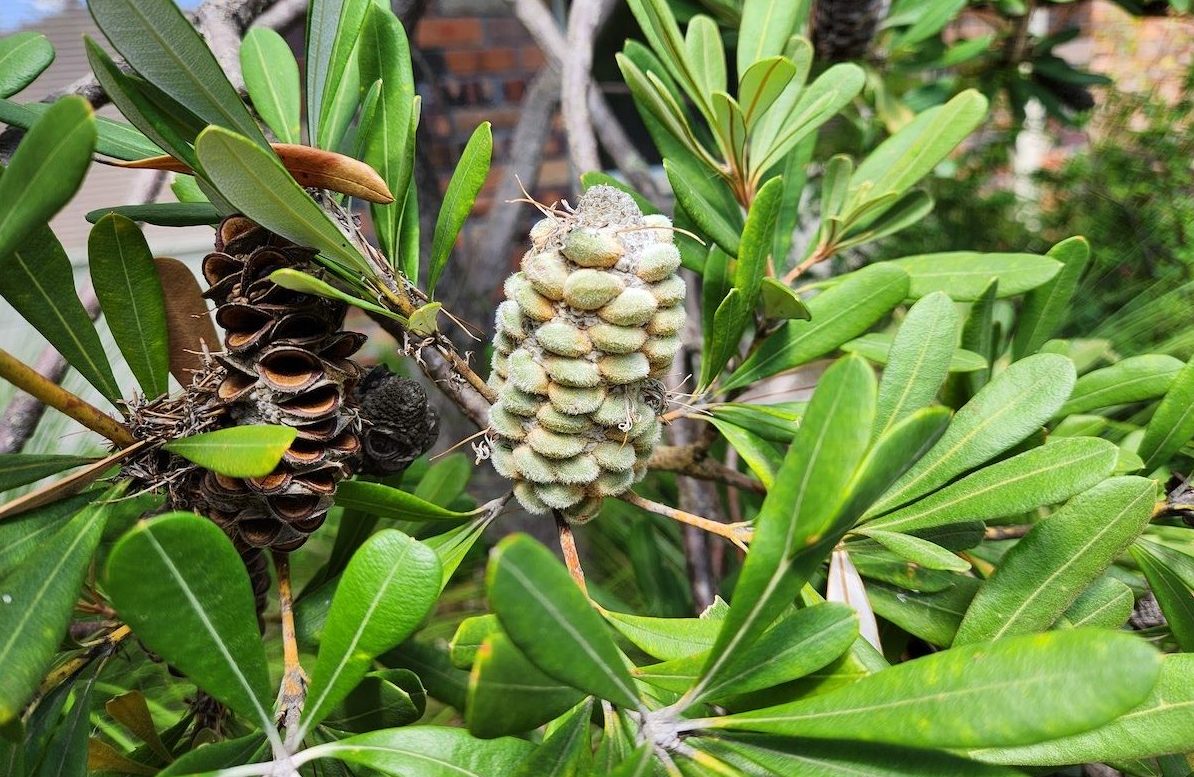
Gardening writer JACKIE WARBURTON looks at a Banksia that does well in our region and braces for the start of frosts…
COASTAL Banksia (Banksia integrifolia) is a hardy, fast-growing perennial that attracts native birds and encourages an abundance of habitat.

It grows well in our region and, if given a chance, can tower in a garden to 10 metres or more.
Widely grown along the east coast of Australia, it is suitable for sandy coastal soils to inland soils in the mountains. Fortunately, its root system is not known to be invasive and has shallow roots that do well in our hard, clay soils.
It matures at around five to six years and, as a member of the Proteaceae family, needs only native fertilisers that are low in phosphorus.
The bark has interesting and tessellated greyish-to-brown patterns and its flowers are fodder for bats or possums and a magnet for nectar-feeding birds such as the yellow-tailed cockatoo. Red wattlebirds are ferociously territorial when the plant is in flower and will guard the large, lemon-yellow flowers for themselves.
Coastal Banksia flowers on old growth and the only pruning would be to snap off spent flowers to leave old-branch growth for next year’s flowering. A Banksia that’s not flowering needs more sunlight and a little native fertiliser will help with flowering in autumn and putting on good growth before the cold weather sets in.
If planting a Banksia this season, dig a hole double the size of the pot, ensure there is good drainage, add a little coarse sand and water in well.

THERE are about three to four weeks until we are due to get the first frost for the season. Anzac Day has always been the signal for my glasshouse doors to go on and indoor and frost-sensitive plants to be moved inside.
I have two large glasshouses that don’t get under zero degrees in winter and are a saviour for large plants that don’t fit into the house.
In addition, rearranging my plants indoors for winter, I always add a pot or two of Mexican Butterwort (Pinguicula emarginata), which act as living sticky traps. They are carnivorous plants and use their sticky leaves to catch small bugs and insects such as fungus gnats.
Fungus gnats breed in moist environments where fungi grows. If there’s an abundance of them, then overwatering could be the issue. Monitoring the number of insects on the leaves of the Butterwort will indicate if there is an issue with indoor plants.
Butterworts are from the Americas and grow naturally alongside Agaves, succulents and Tillandsias. They are tropical plants and won’t survive in our outdoor winters, but a worthy plant to have indoors in a bright light and not in direct sunlight.
Most importantly, use tepid water to keep it moist but not wet, and limit overhead watering. Replanting should be done in spring or in the warmer months. Use 50 per cent sphagnum moss and 50 per cent sharp washed river sand, but no fertiliser.
Jottings…
- Apples are ripe for picking when the stalk comes away easily from the tree.
- Green manure crops can be planted now in fallow, weed-free ground.
- Prepare the ground for growing garlic in full winter sun.
- Trim conifers and evergreens before the cold weather sets in.
Who can be trusted?
In a world of spin and confusion, there’s never been a more important time to support independent journalism in Canberra.
If you trust our work online and want to enforce the power of independent voices, I invite you to make a small contribution.
Every dollar of support is invested back into our journalism to help keep citynews.com.au strong and free.
Thank you,
Ian Meikle, editor





Leave a Reply